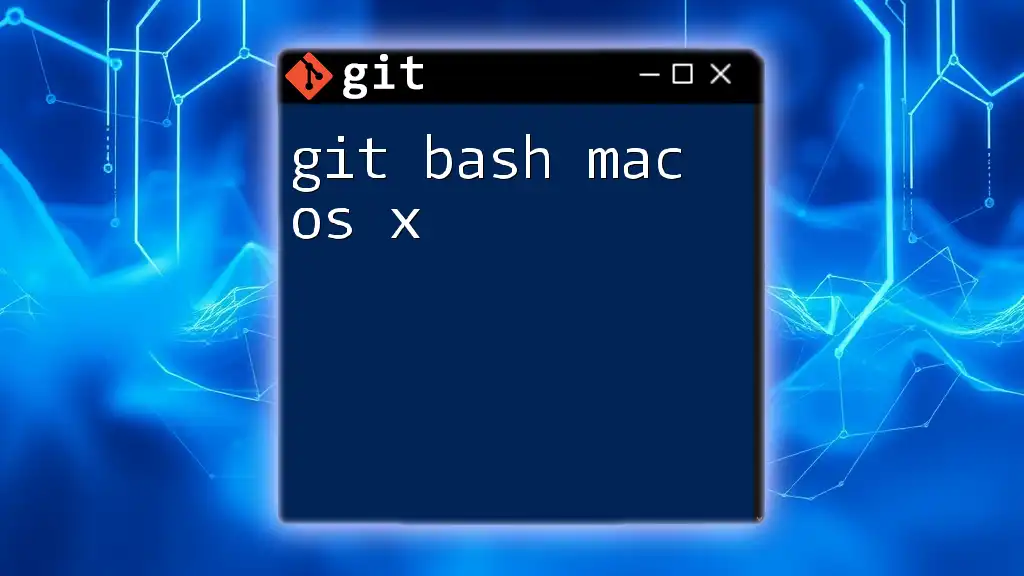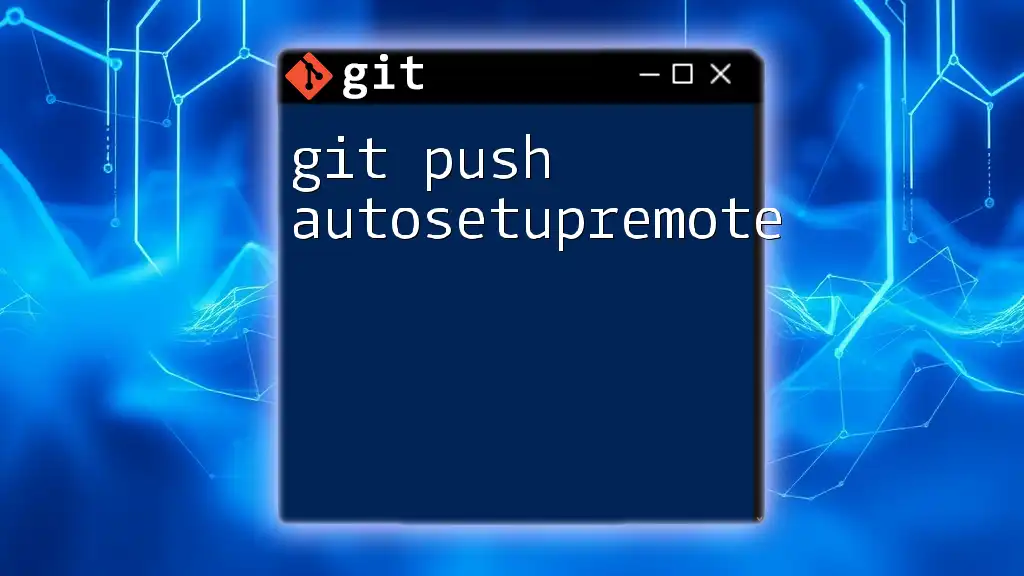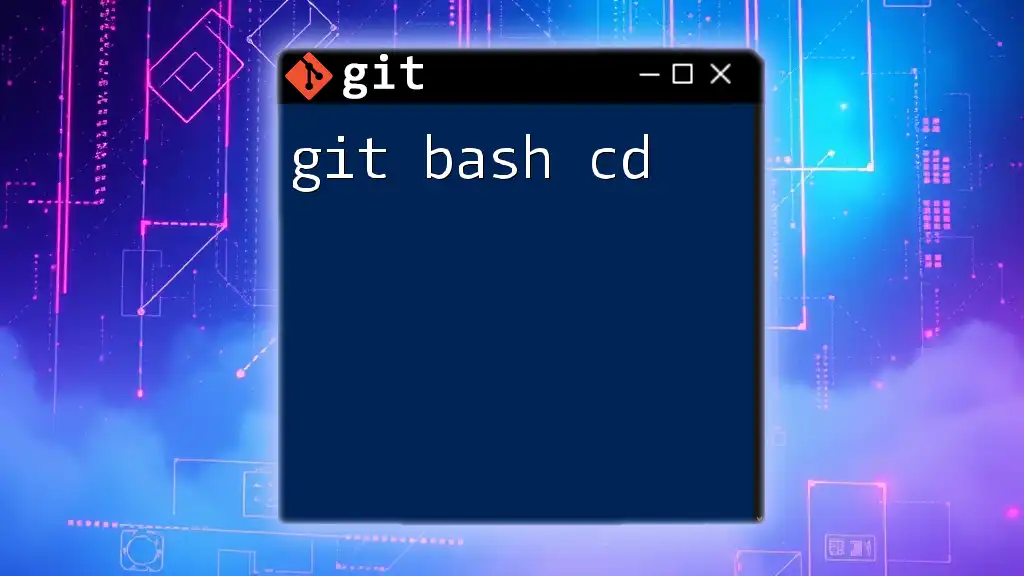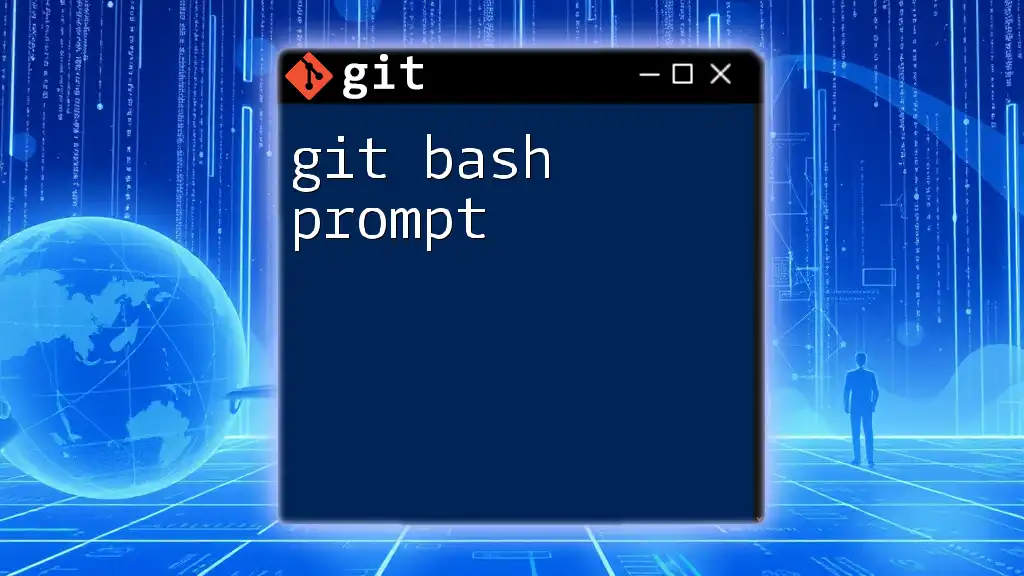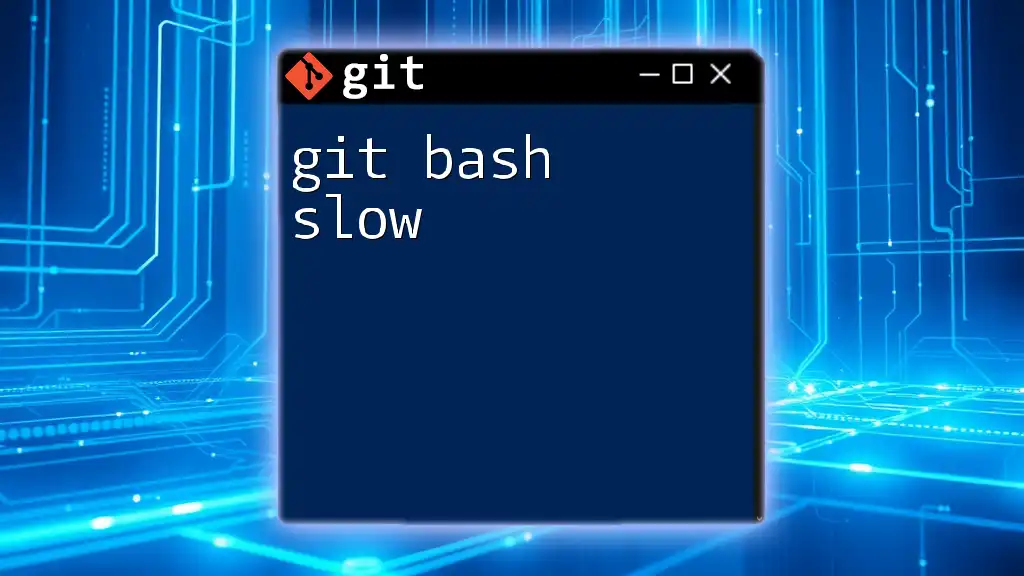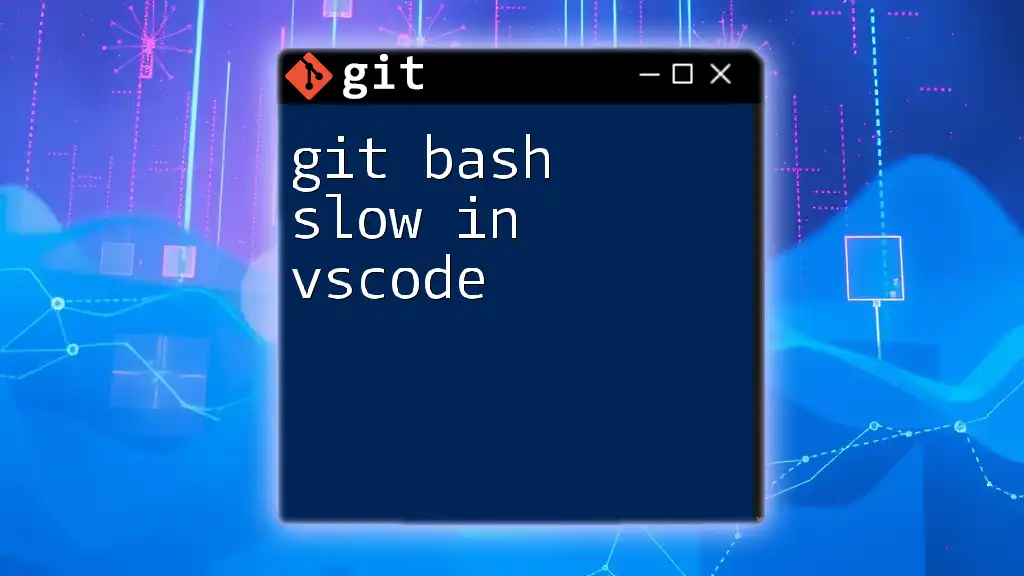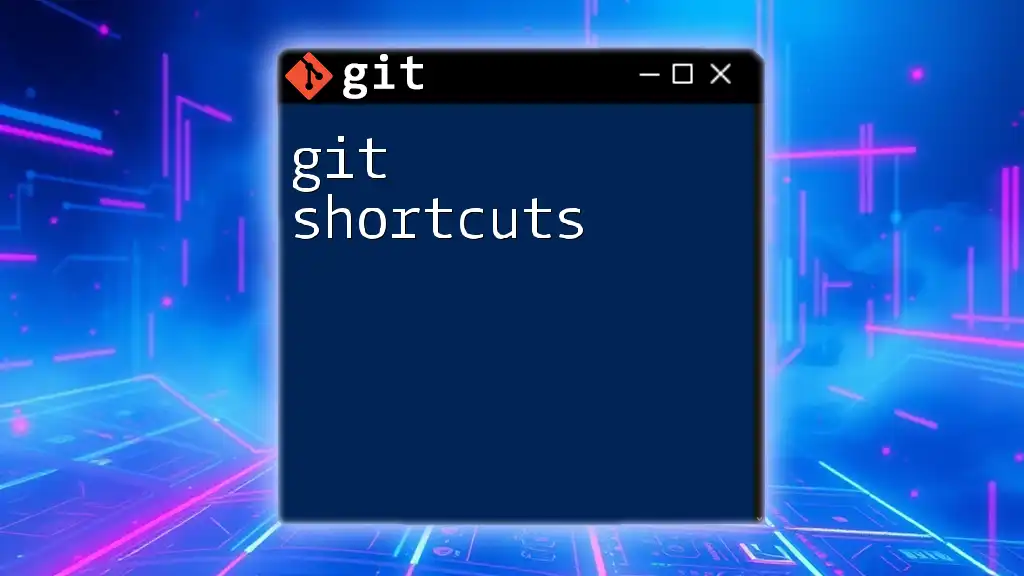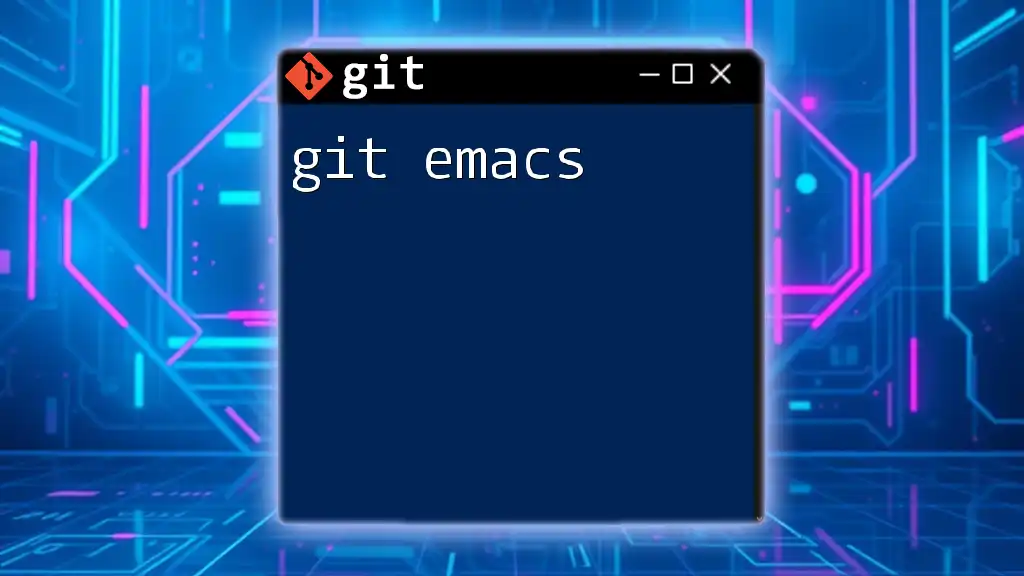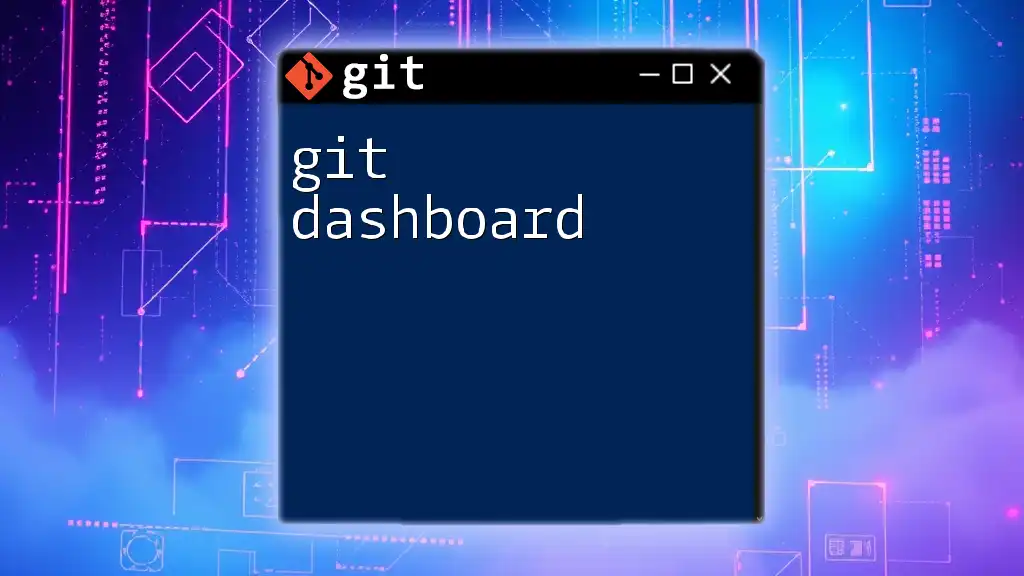Sure! Here's a concise explanation along with a code snippet:
In macOS, Git Bash allows users to execute Git commands in a terminal environment, enabling streamlined version control for their projects.
# To initialize a new Git repository in your project directory
git init
What is Git Bash?
Git Bash is a command-line shell for working with Git. It provides a Unix-like interface on Windows, allowing developers to run commands in a familiar environment. While inherently aimed at Windows users, the concepts and commands you learn with Git Bash apply universally across different operating systems, including macOS. Understanding Git Bash is critical for developers, as it allows for streamlined version control, code management, and collaboration.

Getting Started with Git Bash on macOS
Installing Git Bash
To use Git Bash on macOS, you typically leverage the terminal, as it natively supports Git commands. Here's how to install Git:
-
Download Git for macOS: Navigate to the [official Git downloads page](https://git-scm.com/download/mac) and download the latest version suitable for your macOS.
-
Installation Process: Follow the installation prompts. The installation wizard will guide you through the setup process, which typically consists of agreeing to the license, choosing the installation location, and completing the installation.
-
Verifying the Installation: After installation, you can confirm Git is working by running the following command in your terminal:
git --version
This should output the installed version of Git, verifying that the installation was successful.
Setting Up Your Environment
After installation, the next step is to configure your Git environment to fit your needs.
Configuring Your Git Environment
Setting up your username and email is crucial for tracking changes you make in repositories. To do this, use the following commands:
git config --global user.name "Your Name"
git config --global user.email "your_email@example.com"
Using the `--global` flag will ensure that these settings apply to all repositories on your system.
Choosing a Text Editor for Git
Choosing a text editor that you'll use with Git can make your workflow more efficient. Popular choices among developers include Sublime Text and Visual Studio Code. To set your default editor, you can use:
git config --global core.editor "code --wait" # For Visual Studio Code
This statement sets Visual Studio Code as the editor for Git operations such as commit messages.
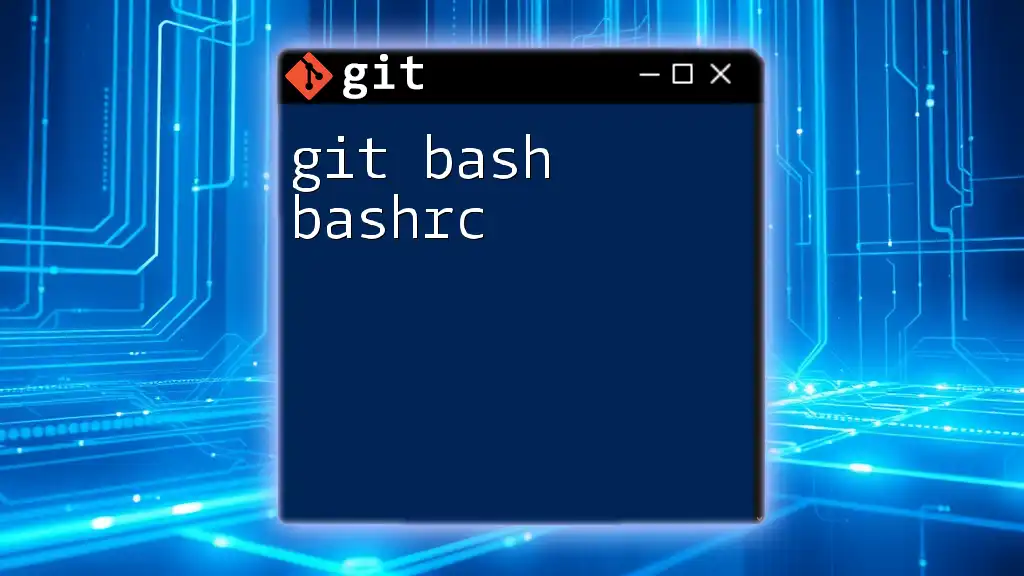
Basic Git Commands in Bash
Understanding the Git Workflow
The common Git workflow typically follows these steps: work on a file, stage the changes, commit the changes, and push to a remote repository. Understanding this cycle is fundamental for utilizing Git effectively.
Commonly Used Commands
Creating a New Repository
To start a new project, you can create a repository using the following command:
git init my-project
This will create a new directory called `my-project` containing an empty Git repository.
Cloning an Existing Repository
If you'd like to work on an existing project, you can clone it by running:
git clone https://github.com/username/repo.git
This command will create a local copy of the remote repository specified in the URL.
Checking Repository Status
To view the current state of your working directory and staging area, use:
git status
This command shows you which files are staged, which are modified, and which are untracked.
Adding and Committing Changes
Once you've made changes, you'll want to stage and commit them. To stage a specific file:
git add file.txt
Next, commit your changes with a descriptive message:
git commit -m "Initial commit"
Crafting meaningful commit messages is essential for maintaining project history.
Pushing and Pulling Changes
Pushing Changes
To upload your local commits to a remote repository, use:
git push origin main
This command pushes the local `main` branch to the remote repository named `origin`.
Pulling Changes
To update your local repository with changes from the remote repository, leverage:
git pull origin main
This brings in the latest changes from the `main` branch of the remote repository.
Branching and Merging
Creating a New Branch
Branching is a powerful feature in Git. To create a new branch, use:
git branch new-feature
This creates a new branch named `new-feature` based off your current branch.
Switching Branches
To switch to your newly created branch:
git checkout new-feature
You'll now be working in the `new-feature` branch.
Merging Branches
Once your work on the feature is complete, switch back to the main branch to merge:
git checkout main
git merge new-feature
This integrates changes from `new-feature` into `main`, allowing you to maintain a clean project history.
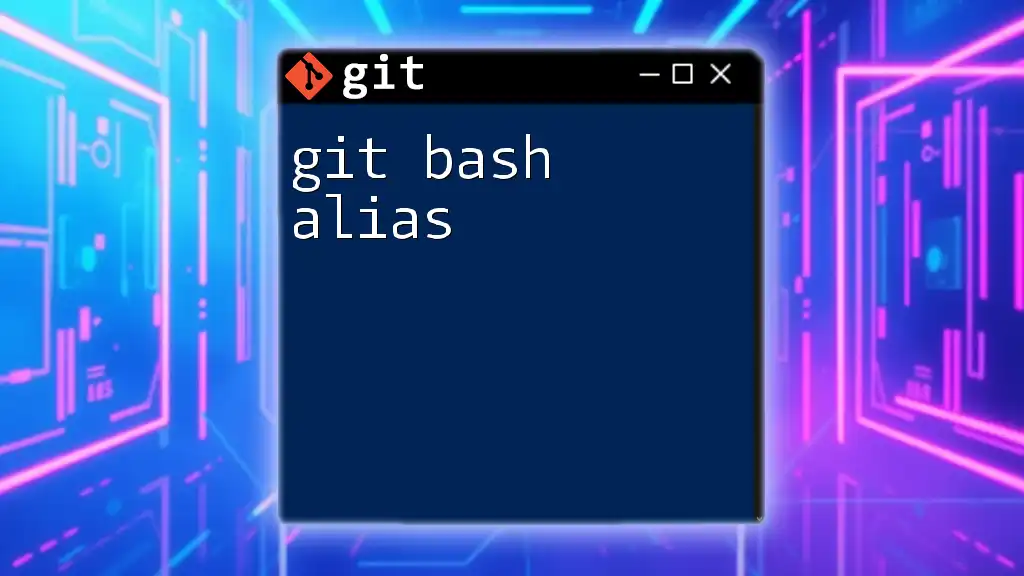
Advanced Git Bash Usage
Using Git Bash with SSH
For security and convenience, using SSH keys for GitHub is highly recommended. To set this up, generate an SSH key using:
ssh-keygen -t rsa -b 4096 -C "your_email@example.com"
Follow the prompts and add the SSH key to your GitHub account. This will allow for secure connections without the need for entering your password every time you push changes.
Configuring Git Aliases
Git aliases can streamline your workflow by allowing you to create shorthand commands. To set up aliases, you can run commands like:
git config --global alias.st status
Now, instead of typing `git status`, you simply type `git st`.
Common Git Errors and Troubleshooting
Even the most experienced users encounter Git errors. Some common issues include merge conflicts and failed pushes due to uncommitted changes. Understanding error messages can facilitate finding the right solutions quickly, allowing you to resolve issues and continue your work.

Tips for Efficient Use of Git Bash
Keyboard Shortcuts and Tips
Utilizing keyboard shortcuts can greatly enhance your productivity. Familiarize yourself with navigation shortcuts and command histories to speed up your workflow in Git Bash.
Best Practices for Using Git
Maintaining a clean commit history is vital. Commit often and use descriptive messages. Encourage collaborative practices, such as code reviews, to ensure high-quality contributions.
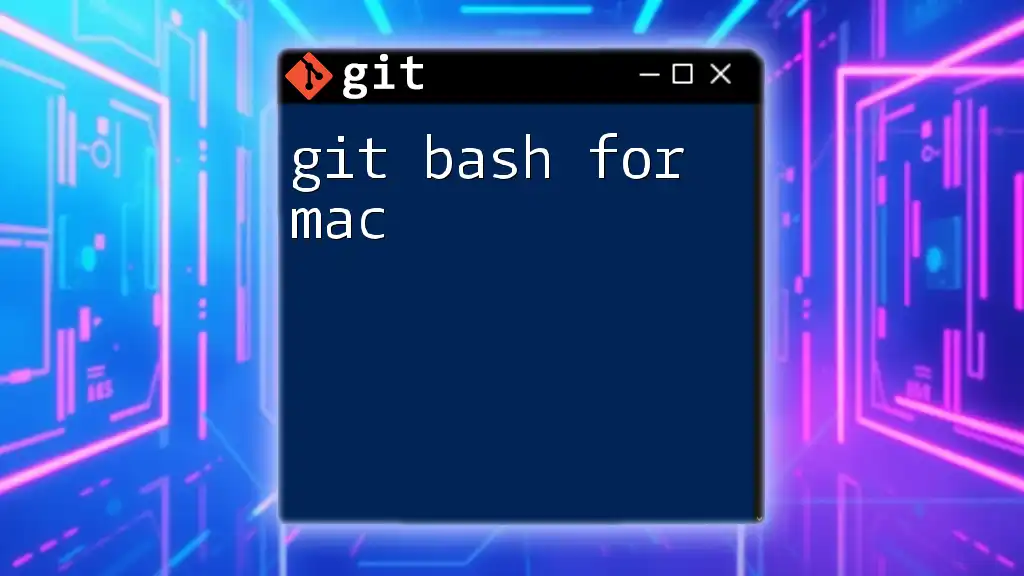
Conclusion
By mastering Git Bash on macOS, you're equipping yourself with the tools necessary for effective version control and collaboration in software development. Engage candidly, practice regularly, and explore further to nurture your understanding of Git and its capabilities.
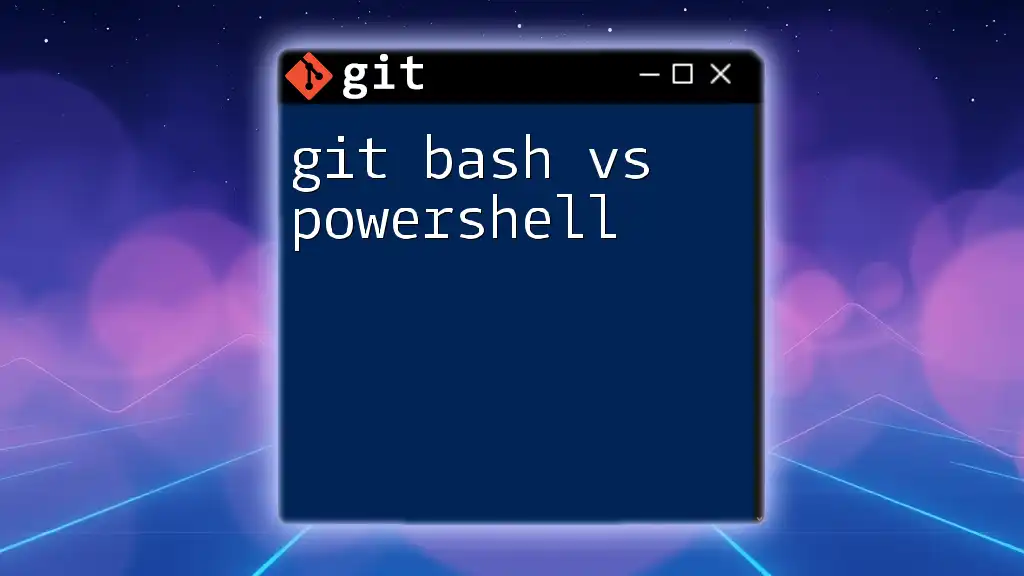
Additional Resources
For further exploration, consider diving into the [official Git documentation](https://git-scm.com/doc) or checking out specialized books and online courses on Git to deepen your expertise.
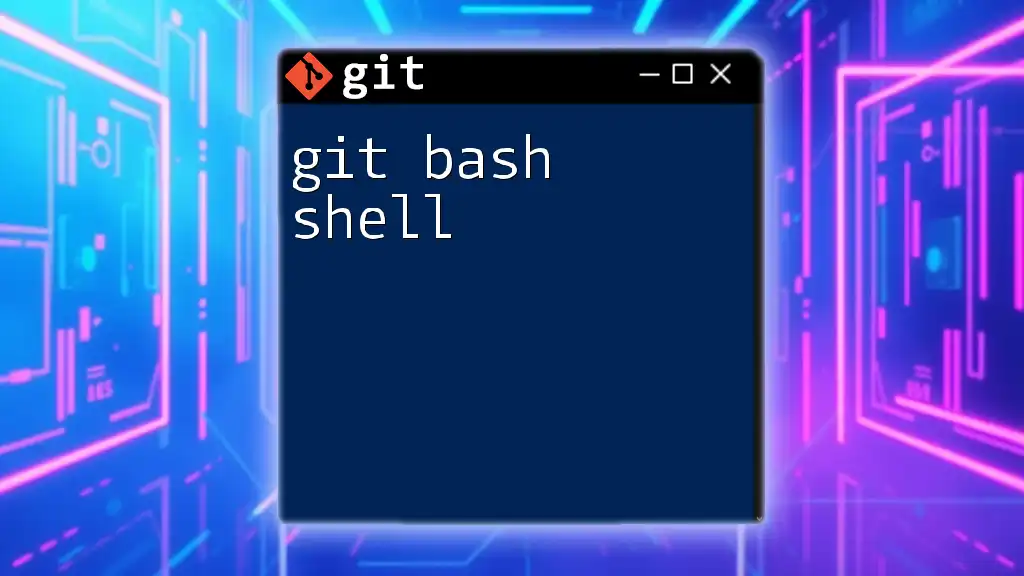
Call to Action
Join our community and subscribe for more insightful tutorials and tips on using Git Bash and other essential development tools!

